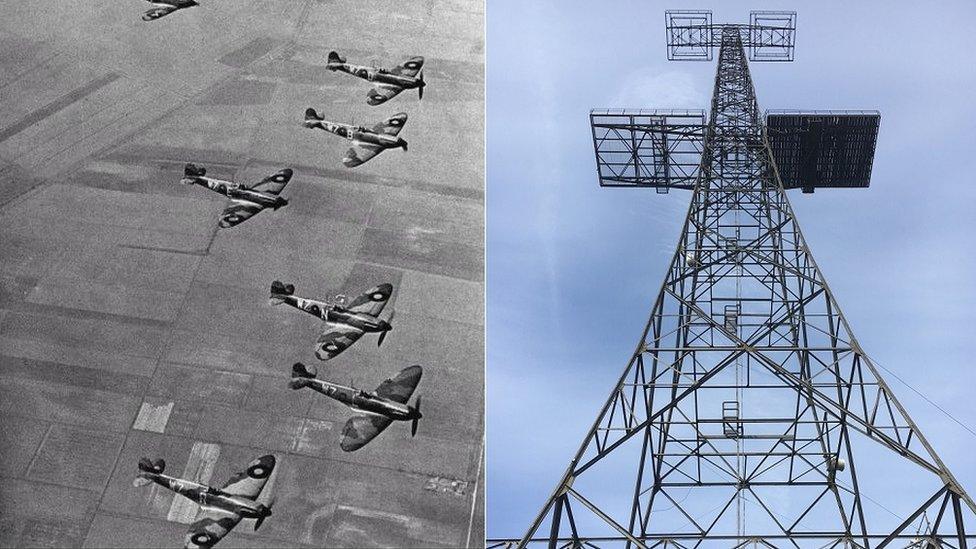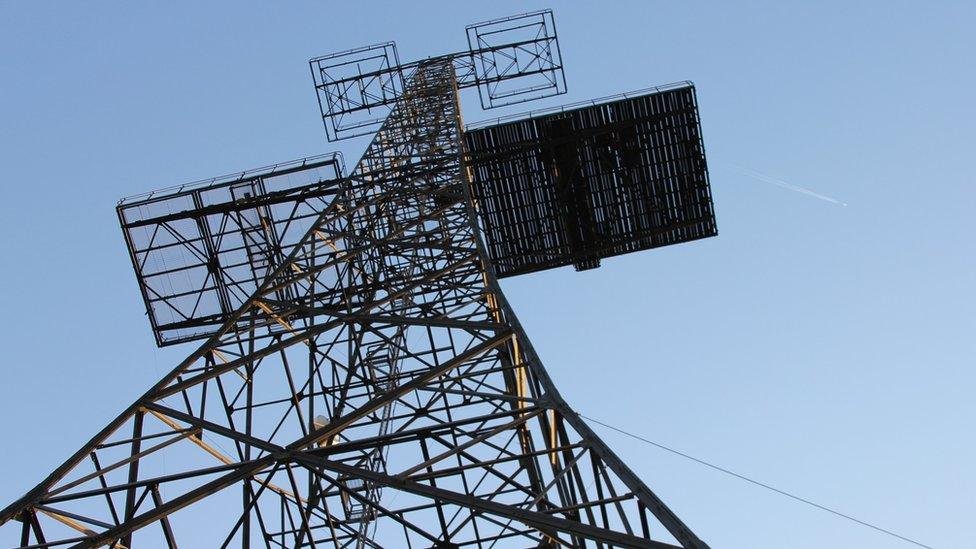Battle of Britain radar tower in Essex given protected status
- Published

The Chain Home Tower at Great Baddow, Essex has been Grade II listed on the advice of Historic England
A radar tower that helped win World War Two's Battle of Britain by providing early warning of Luftwaffe attacks has been given protected status.
The Chain Home Tower at Great Baddow in Essex has been Grade II listed by the Department for Digital, Culture, Media and Sport (DCMS).
It is the only complete tower of its kind surviving in the British Isles.
Tony Calladine from Historic England said it was "a testament to the men and women who developed the technology".
It has been listed to mark the 80th anniversary of the Battle of Britain, which took place between July and October 1940.
'Innovation and brilliance'
The tower, one of five complete Chain Home masts still standing, was originally erected at RAF Canewdon in south-east Essex in 1937 and relocated to Great Baddow in 1956.

The tower, a prominent Essex landmark, was moved to the Marconi Company research site at Great Baddow
Chain Home was the first early warning radar network in the world and the first military radar system to be fully operational.
As well as detecting enemy planes, the technology was vital to the defence of London, through the tracking of destructive V1 flying bombs and V2 missiles later in World War Two.
When the tower, which is 109m (358ft) high, was relocated in 1956 it was used in defence research and communications during the Cold War.
It was particularly crucial in the development of the radio guidance system for the British "Blue Streak" intercontinental ballistic missile.
Daniel Black, who campaigned for the tower to be listed, said: "This tower represents not only the innovation and brilliance of pre-war engineers and scientists but also the heritage of the local area."

Find BBC News: East of England on Facebook, external, Instagram, external and Twitter, external. If you have a story suggestion email eastofenglandnews@bbc.co.uk, external
- Published21 August 2020

- Published28 May 2020
